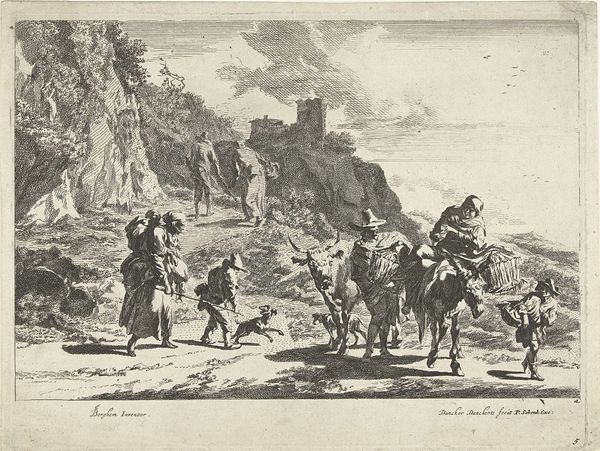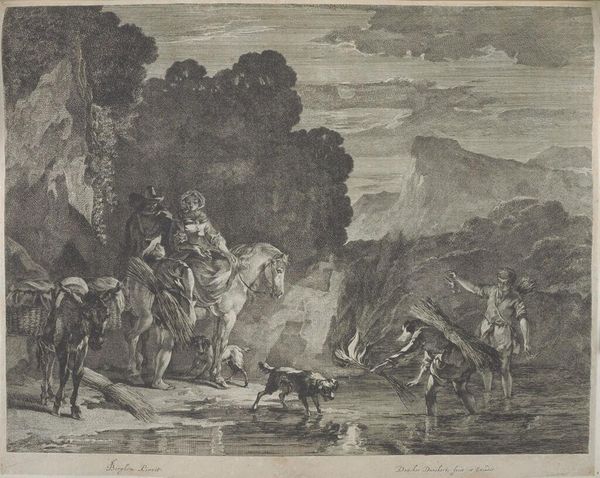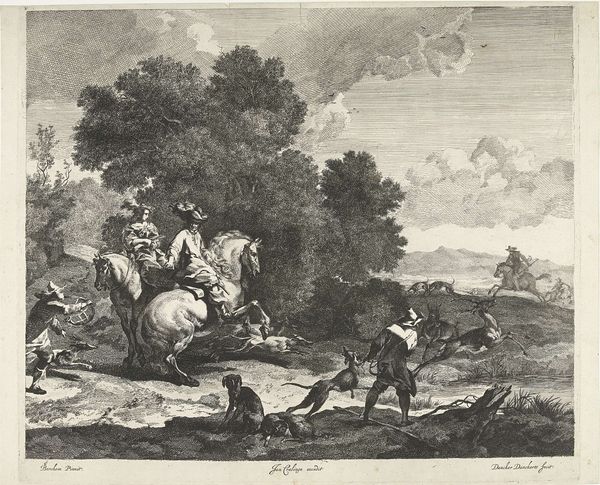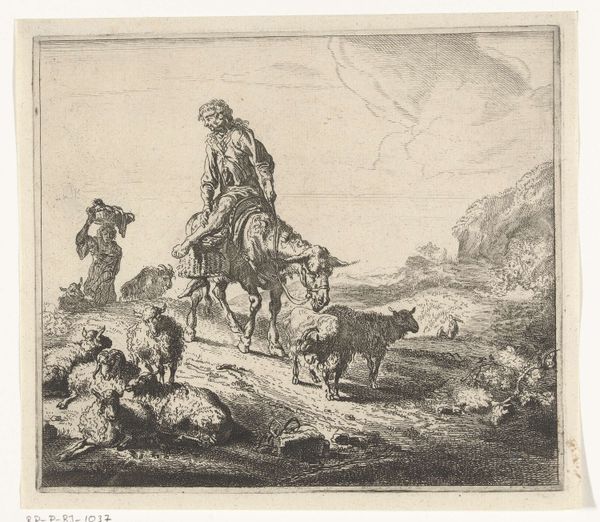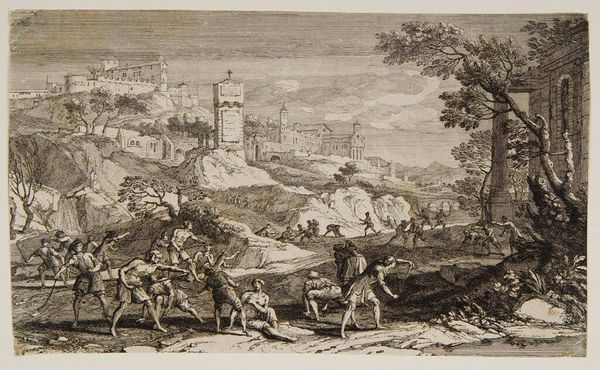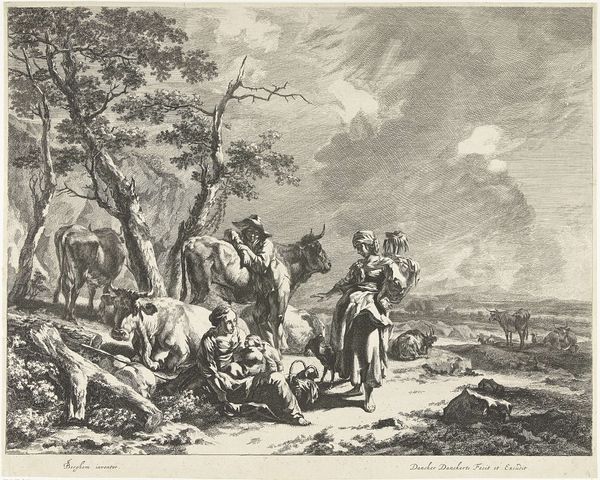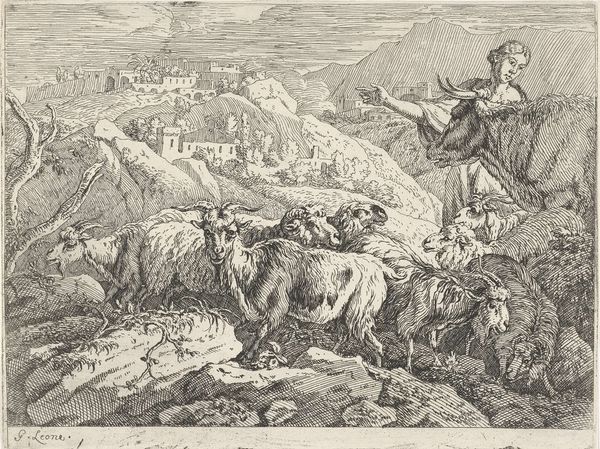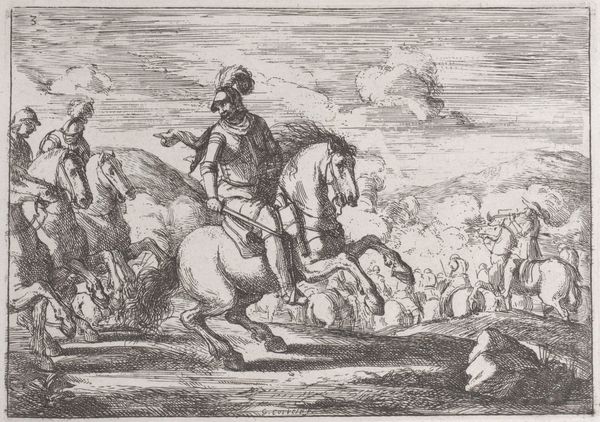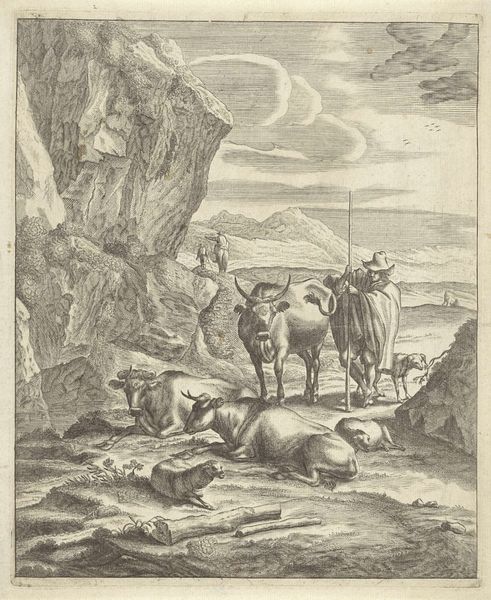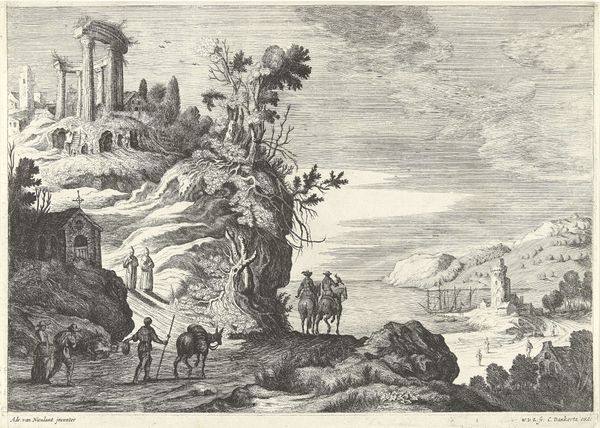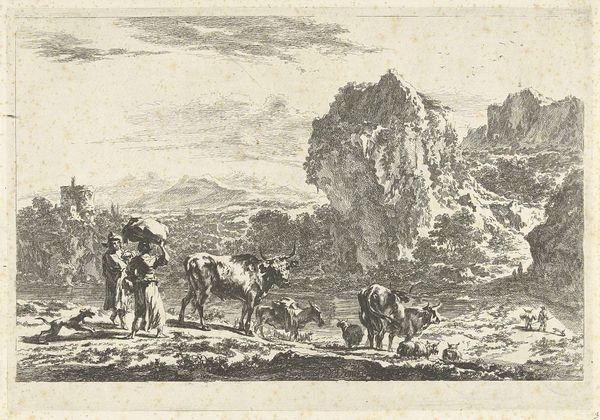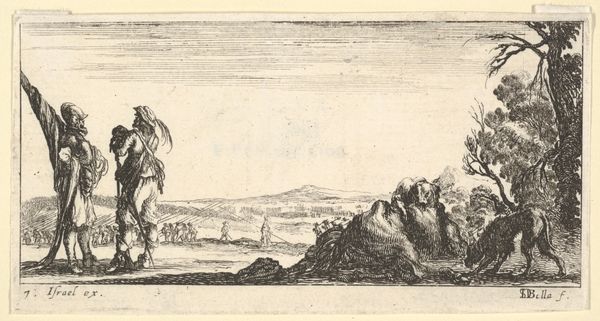
print, etching
#
baroque
# print
#
etching
#
landscape
#
figuration
#
genre-painting
Dimensions: height 299 mm, width 408 mm
Copyright: Rijks Museum: Open Domain
Curator: Look at how the artist uses line! This piece, an etching by Cornelis Visscher, is called "Staande Spinster", made sometime between 1638 and 1658. I’m immediately struck by its pastoral calm. What do you think? Editor: It has a strange tension. There’s this immediate feeling of rustic charm, but also an unsettling emptiness to the landscape, almost like a stage set. Curator: I see what you mean. Visscher was working at a time when the Dutch Republic was consolidating its wealth and power. Genre scenes like this, depicting everyday life, became popular, not just for their aesthetic value, but also for what they revealed about the values of Dutch society at the time. The artist clearly captures an everyday life, though, no? Editor: He does, but look closer. Notice the dramatic shadows, the way the lines create a sense of depth and volume in the figures? And that crumbling tower in the background - the sharp, directional lines against the cloudy skies! These elements seem like typical landscape conventions but seem forced, don’t you think? The foreground pulls my eye in with those lines, but then my focus falters. Curator: True. But think of the function of genre-paintings at the time. By showing scenes of humble labor, there was a clear projection of ideals of simple, honest living to emulate. Visscher uses conventions—both the landscape and the figures—to represent something very intentional. It’s no accident these country scenes gained popularity during times of political change in the Netherlands. It certainly does represent that political background! Editor: It might. However, I cannot help to focus my eyes on its overall visual dynamic, regardless of its purpose. Even though the line work is controlled, Visscher isn’t afraid to let certain areas fall into shadow, creating drama out of the commonplace, just as he’s contrasting architectural remains to represent a particular place or space in mind. Curator: You know, it’s easy to get lost in the beauty and overlook the social context that shapes it. Seeing them side-by-side helps give such richness! Editor: Precisely! Paying attention to both context and visual dynamic transforms an aesthetic study into one full of historical purpose.
Comments
No comments
Be the first to comment and join the conversation on the ultimate creative platform.
